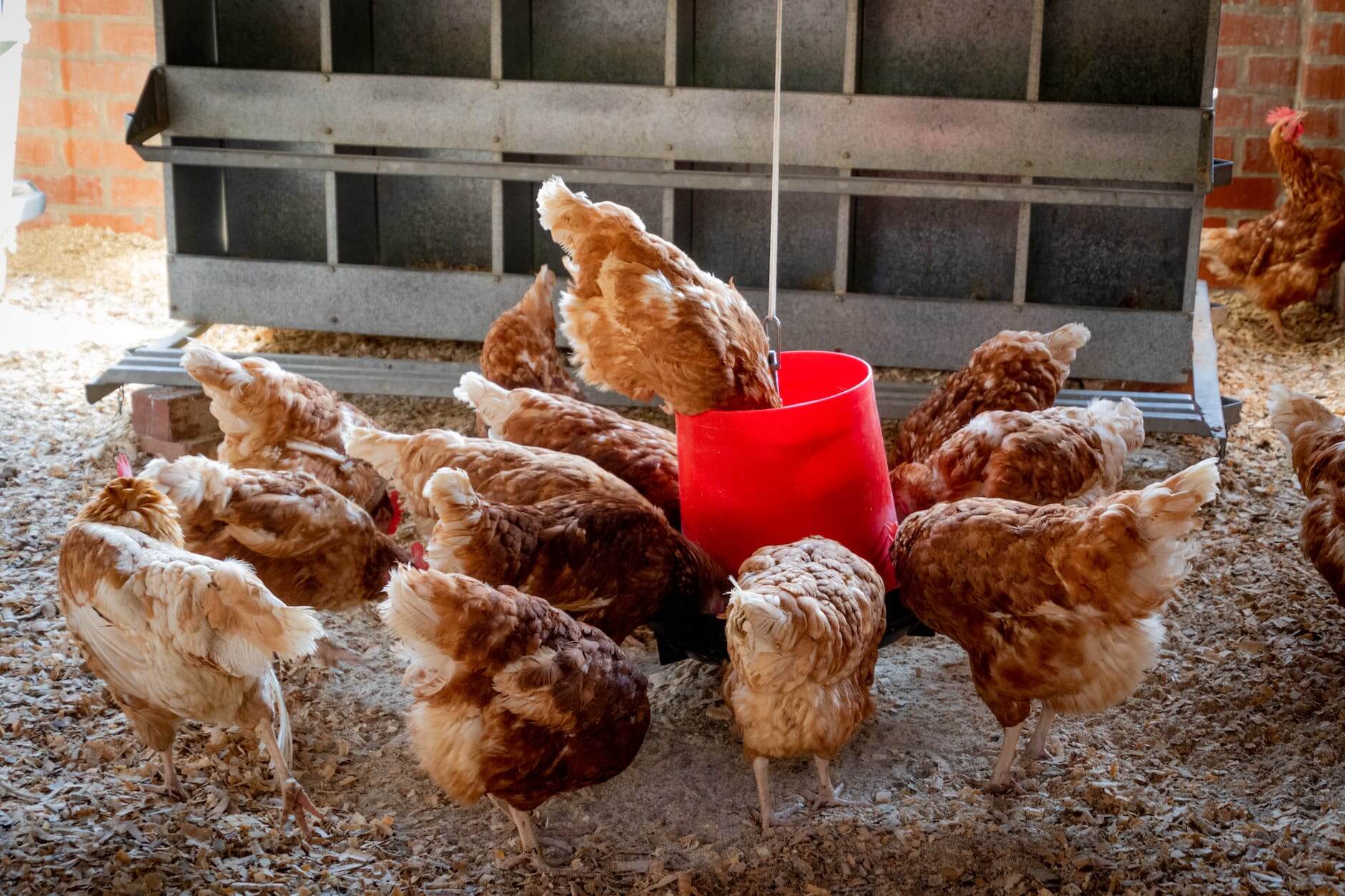When considering the size of a poultry coop, one guiding factor will always be poultry space requirements. In addition to this, you will of course have to consider the poultry system you will implement. Furthermore, the placement of feeders and drinkers, and the delivery of feed and water will play a factor. In addition, the removal of litter if necessary, may also influence the size of a coop.
On average each bird requires 4 square feet of space. However, bigger breeds require more space
The rule of thumb is that on average, a space of 3 – 4 square feet should be enough for a chicken. For instance, if you are looking to house a flock of 1,000 birds in a deep litter system, your coop would have to be at least be 3,000 – 4,000 square feet.
However, the eventual coop size is not necessarily dependent on the number of birds. Poultry systems such as slatted floor or cages can accommodate large number of chicken in a small space.

Poultry space requirements
The following is a generic guide to poultry living space requirements. However, note that this is not comprehensive and may not be representative of your poultry system or breed.
| Bird size | Indoor space / bird | Outdoor space / bird |
|---|---|---|
| Small | 2 square ft | 10 square feet |
| e.g. Bantams | ||
| Medium | 3 – 4 square ft | 10 square feet |
| E.g. Sapphire Gem, Isa Brown, Sussex, Rhode Island Red, Australorp | ||
| Large | 8 square ft | 20+ square feet |
| E.g Jersey Giants, Brahma chicken, Lavender Orpington, Buff Orpington | ||
Petkeen provides a more comprehensive table on poultry space requirements. In addition Petkeen provides space recommendations for both intensive and extensive poultry systems.
Factors that determine poultry space requirements
There are a number of factors that determine the living space required for poultry birds. These include:
- Poultry breed and size
- Poultry farming regulation
- Poultry housing system
- Poultry market perception and demand
While the first two factors can be quite straight forward, market perception is not. For instance, if market perception is that chicken with more living space are healthier and happy, this may drive you to build a bigger coop than otherwise.
Furthermore, changing poultry farming regulation and animal welfare laws may require bigger living spaces per chicken. For instance, in the EU, a hen in furnished cages must have at least 750cm sq.
To be on the safe side, consult with your flock supplier and applicable poultry farming regulation.
FYI you can find Chicken coop size calculators on the internet. We however, insist that you house your chicken as prescribed by your flock supplier, or certified vet and abide by applicable regulation.
Lastly but not least, it would be safer to have extra space than to overcrowd your chicken. Overcrowding can result to stampeding, suffocation, disease and death.

